
Karnataka, a state in southern India, is known for its vast array of ancient temples that showcase its rich cultural heritage. These temples attract devotees and tourists from all over the world. Some of the prominent temples in Karnataka include the Mookambika Temple and Sri Kollur Mookambika Temple dedicated to Goddess Mookambika, the Virupaksha Temple and Chennakeshava Temple known for their intricate carvings and architecture, the Hoysaleswara Temple renowned for its magnificent design, and the Sri Chamundeshwari Temple offering a panoramic view of Mysore. Other significant temples include the Kukke Subramanya Temple, Udupi Sri Krishna Matha, Dharmasthala Temple, and Murudeshwar Temple. These temples represent a blend of different architectural styles and religious practices, making Karnataka a treasure trove for spiritual and cultural exploration.
Chennakeshava Temple, Belur
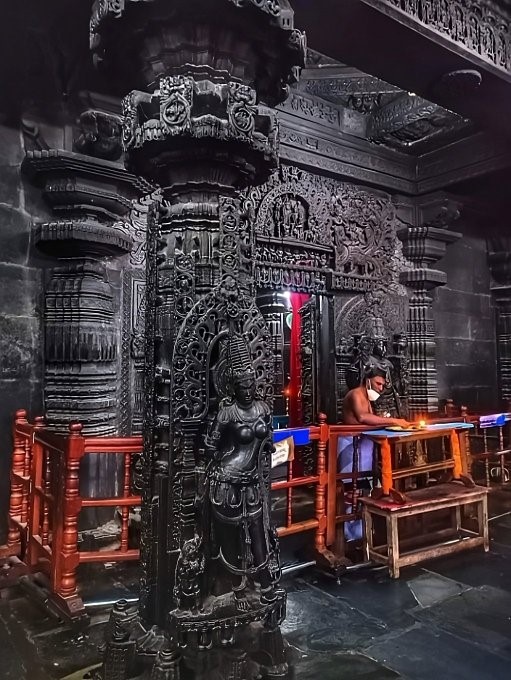
The Chennakeshava Temple in Belur is an exquisite Hindu temple located in the town of Belur, Karnataka, India. It is dedicated to Lord Chennakeshava, a form of Lord Vishnu, and is renowned for its remarkable architecture and intricate carvings.
The temple was built during the Hoysala Empire in the 12th century by King Vishnuvardhana. It took over a hundred years to complete, with contributions from different rulers of the dynasty. The temple stands as a masterpiece of Hoysala architecture and is considered one of the finest examples of South Indian temple art.
The Chennakeshava Temple is known for its intricate stone carvings that adorn every inch of its exterior and interior walls. The carvings depict various mythological scenes, celestial beings, animals, and intricate floral motifs. Each sculpture is meticulously crafted, showcasing the exceptional craftsmanship of the artisans of that era.
The temple complex comprises multiple structures, including the main sanctum sanctorum (garbhagriha), the main hall (mantapa), and several smaller shrines. The garbhagriha houses the idol of Lord Chennakeshava, which is a mesmerizing sculpture depicting Lord Vishnu in a standing posture.
The main hall of the temple, called the Navaranga, is a grand pillared hall with intricately carved pillars. The ceiling of the hall is adorned with exquisite artwork depicting scenes from the Hindu epics, such as the Mahabharata and the Ramayana.
Vitthala Temple, Hampi
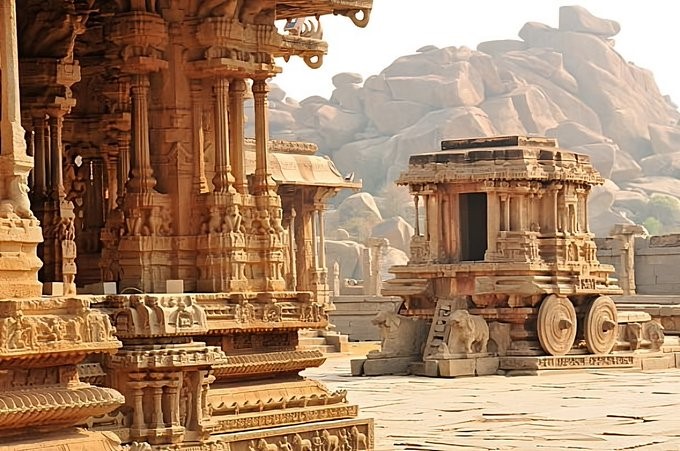
The Vitthala Temple, located in Hampi, Karnataka, India, is a magnificent temple dedicated to Lord Vitthala, a form of Lord Vishnu. It is one of the most iconic and revered temples in Hampi and stands as a testament to the architectural brilliance of the Vijayanagara Empire.
Built during the 15th century, the Vitthala Temple is renowned for its exceptional craftsmanship and intricate stone carvings. The temple complex is sprawling and comprises various structures, courtyards, halls, and shrines.
The Srikanteshwara temple of Nanjangudu – The biggest temple in Karnataka

The Srikanteshwara Temple of Nanjangudu, located in Nanjangudu (also known as Nanjanagudu), Karnataka, India, is a prominent Hindu temple dedicated to Lord Shiva. It is a revered pilgrimage site and holds great religious significance among devotees.
The temple dates back several centuries and has a rich history associated with it. Legend has it that the great sage Gautama stayed in Nanjangudu and installed a Lingam (symbolic representation of Lord Shiva) here, thus establishing the sanctity of the place.
The Srikanteshwara Temple is known for its architectural beauty and spiritual ambiance. The main sanctum sanctorum houses the Lingam of Lord Srikanteshwara (another name for Lord Shiva), which is the presiding deity of the temple. The Lingam is believed to be self-manifested and holds immense reverence among devotees.
The temple complex features several other shrines dedicated to various deities such as Lord Ganesha, Goddess Parvati, Lord Subramanya, and Lord Nandi (the divine vehicle of Lord Shiva). These shrines contribute to the overall sanctity and religious fervor of the temple.
Sri Chamundeshwari Temple, Mysore
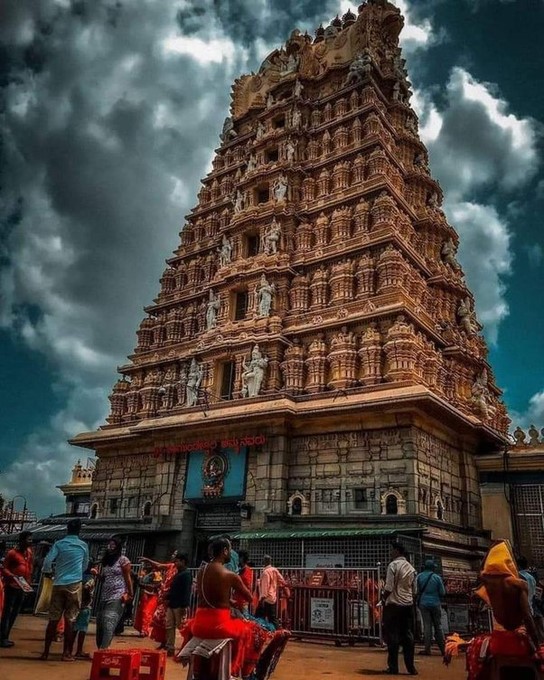
The Sri Chamundeshwari Temple is a prominent Hindu temple located on the Chamundi Hills in Mysore, Karnataka, India. It is dedicated to Goddess Chamundeshwari, an incarnation of the Hindu goddess Durga.
The temple holds great historical and religious significance, with its origins dating back over a thousand years. It is believed to have been built during the 12th century by the Hoysala rulers, and it has undergone renovations and additions by subsequent dynasties, including the Vijayanagara Empire and the Wodeyar dynasty of Mysore.
The Chamundeshwari Temple is situated at the summit of the Chamundi Hills, which offer a breathtaking panoramic view of Mysore city. To reach the temple, visitors can climb a flight of around 1,000 steps or take a road that winds its way up the hill.
Virupaksha Temple, Hampi
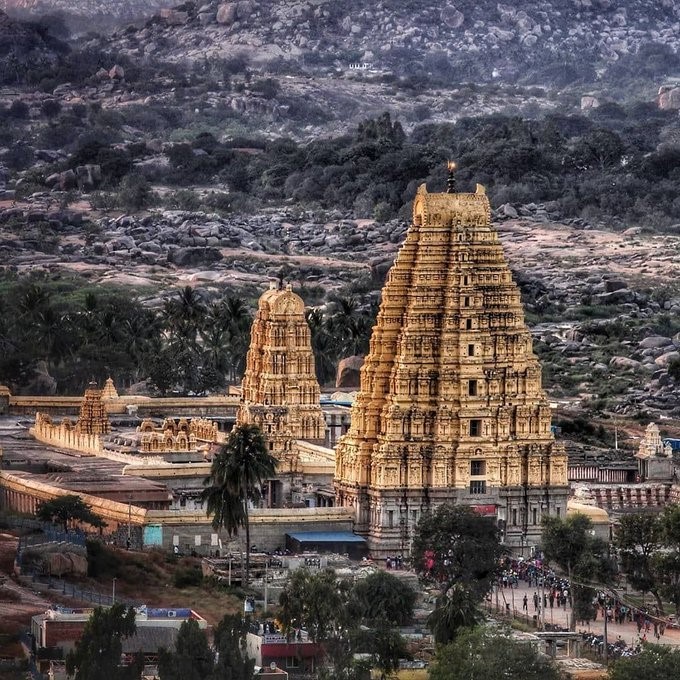
The Virupaksha Temple, located in Hampi, Karnataka, India, is an ancient and revered Hindu temple dedicated to Lord Virupaksha, a form of Lord Shiva. It is one of the oldest functioning temples in India and holds immense religious and historical significance.
The temple dates back to the 7th century and has undergone several additions and renovations over the centuries. It stands as a testimony to the architectural grandeur and artistic brilliance of the Vijayanagara Empire, which ruled the region during its peak.
The Virupaksha Temple is situated on the banks of the Tungabhadra River and serves as the main religious center of Hampi. The temple complex encompasses various structures, courtyards, halls, and shrines, each contributing to its magnificence.
The main sanctum sanctorum houses the sacred Lingam of Lord Virupaksha, which is worshipped with great devotion by devotees. The temple’s tower (gopuram) rises majestically, showcasing intricate carvings and sculptures of gods, goddesses, and mythological figures.
Vidyashankara Temple in Sringeri
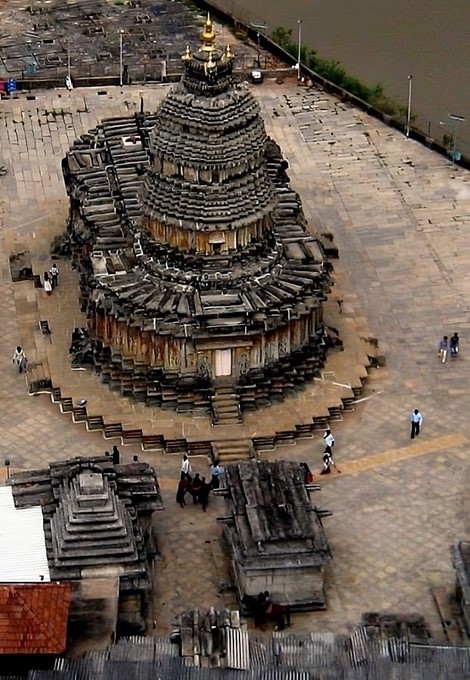
The Vidyashankara Temple, located in Sringeri, Karnataka, India, is a renowned Hindu temple dedicated to Lord Vidyashankara, an incarnation of Lord Shiva. It is an important pilgrimage site and a significant center of learning and spirituality.
The temple was constructed in the 14th century under the patronage of the Vijayanagara Empire. It was built to commemorate the illustrious saint and philosopher, Sri Vidyashankara, who played a vital role in the establishment of the Sringeri Sharada Peetham, a prominent monastery and seat of learning.
The architecture of the Vidyashankara Temple is a remarkable blend of Hoysala and Vijayanagara styles. The temple complex is known for its unique construction, with its structure incorporating elements of both a temple and a monastery.
The temple’s most distinctive feature is the twelve zodiac pillars, each representing a specific month of the year. The position of the sun’s rays falling on these pillars accurately indicates the astrological signs of the zodiac. This architectural marvel reflects the deep understanding of astronomy and mathematics prevalent during that time.
Mallikarjuna Temple, Pattadakal

The Mallikarjuna Temple, located in Pattadakal, Karnataka, India, is a significant and splendid Hindu temple dedicated to Lord Shiva. It is part of the UNESCO World Heritage site known as the Group of Monuments at Pattadakal, which represents the pinnacle of Chalukyan architecture.
The temple was constructed in the 8th century during the reign of the Chalukya dynasty and is renowned for its architectural grandeur and intricate carvings. The temple’s design reflects a harmonious blend of North Indian Nagara and South Indian Dravidian architectural styles.
The Mallikarjuna Temple follows a typical Dravidian temple plan, consisting of a sanctum sanctorum (garbhagriha), an antechamber (antarala), and a large pillared hall (mandapa). The outer walls of the temple are adorned with exquisitely carved sculptures depicting various gods, goddesses, celestial beings, and mythological stories.
Kedareshwara temple, Balligavi
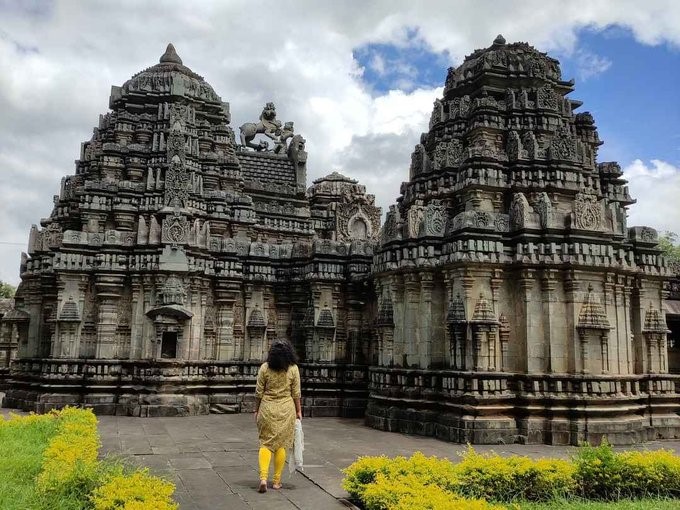
The temple was built during the 11th century CE and is an excellent example of Western Chalukyan architectural style. It stands as a testament to the architectural prowess and artistic finesse of that era.
The Kedareshwara Temple follows a typical trikuta (triple-shrine) design, consisting of three sanctums dedicated to Lord Shiva. Each sanctum houses a Lingam, symbolizing the divine presence of Lord Shiva. The temple complex also includes a spacious pillared hall (mandapa), an open courtyard, and a grand entrance porch.
The Kedareshwara Temple, located in Balligavi, Karnataka, India, is an ancient and historically significant Hindu temple dedicated to Lord Shiva. It is renowned for its architectural beauty and intricate carvings, representing the exquisite craftsmanship of the Western Chalukya dynasty.
The temple’s outer walls are adorned with intricate sculptures and carvings depicting various deities, celestial beings, and mythological stories. The carvings showcase the mastery of the artisans and offer insights into the rich mythology and religious beliefs of ancient India.
The Kedareshwara Temple is particularly renowned for its elaborate and ornate ceilings. The ceilings feature mesmerizing designs, including lotus motifs, geometric patterns, and exquisite sculptural details. These intricately carved ceilings add to the temple’s architectural splendor and visual appeal
Kotilingeshwara Temple at Kammasandra village in Kolar

The Kotilingeshwara Temple, located in Kammasandra village, Kolar district, Karnataka, India, is a renowned Hindu temple dedicated to Lord Shiva. It is widely recognized for its unique feature of housing an enormous number of Shiva Lingams (symbolic representation of Lord Shiva) within its premises.
The temple complex is spread over a vast area and is home to one of the largest collections of Shiva Lingams in the world. It is believed that there are more than a million Lingams installed in and around the temple, with devotees continuously adding to the collection.
The main sanctum sanctorum of the Kotilingeshwara Temple houses the principal Lingam of Lord Kotilingeshwara. The Lingam is a prominent and revered deity among devotees who visit the temple to seek blessings and offer their prayers.
The temple’s architecture reflects a blend of traditional and modern elements. The sanctum sanctorum is adorned with intricate carvings, while the exterior features a towering gopuram (entrance tower) that welcomes devotees with its ornate design.
The temple complex also includes smaller shrines dedicated to various deities such as Lord Ganesha, Goddess Parvati, Lord Hanuman, and others. These shrines contribute to the spiritual ambiance and religious significance of the temple.
The Kotilingeshwara Temple is known for hosting an annual festival called “Maha Shivaratri,” which is celebrated with great fervor and attracts a large number of devotees from far and wide. During this festival, the temple is beautifully decorated, and special rituals and cultural performances take place.
Durga Temple, Aihole
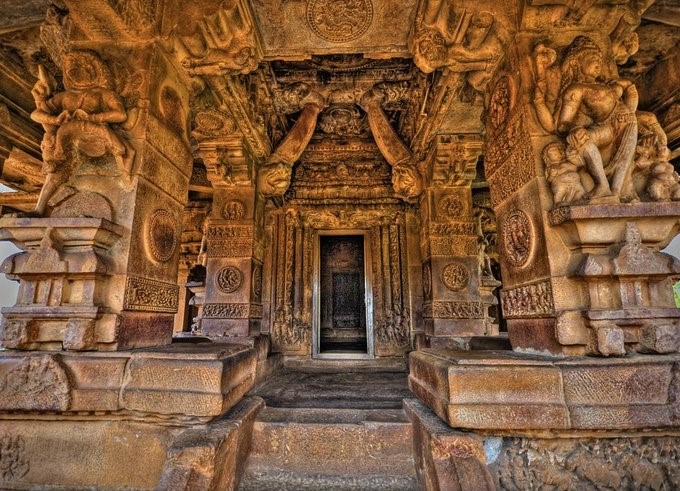
The Durga Temple, located in Aihole, Karnataka, India, is a historic Hindu temple dedicated to Goddess Durga. It is one of the most notable and well-preserved temples in Aihole, known for its unique architectural style and intricate carvings.
The temple was constructed during the 7th and 8th centuries, dating back to the Chalukya dynasty. It showcases a blend of Nagara and Dravidian architectural elements, reflecting the cultural and artistic influences of that era.
Chennakesava Temple, Somanathapura
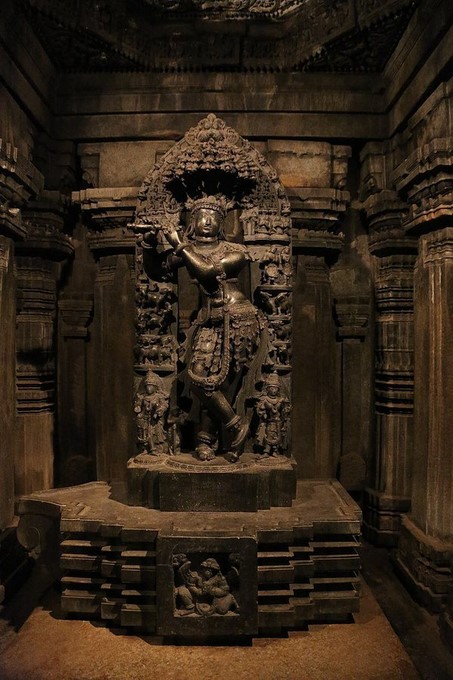
The Chennakesava Temple, located in Somanathapura, Karnataka, India, is a magnificent Hindu temple dedicated to Lord Chennakesava, an incarnation of Lord Vishnu. It is considered one of the finest examples of Hoysala architecture and stands as a testament to the artistic brilliance of the Hoysala Empire.
The Chennakesava Temple is built on a raised platform and follows a trikuta (triple-shrine) design. It consists of three sanctums, each housing beautifully carved idols of Lord Chennakesava, Lord Janardhana, and Lord Venugopala.
The exterior walls of the temple are adorned with an abundance of finely carved sculptures depicting various deities, celestial beings, mythological stories, and scenes from everyday life. The intricate detailing and exquisite craftsmanship of the sculptures are awe-inspiring, showcasing the expertise of the Hoysala artisans.
The highlight of the Chennakesava Temple is its central sanctum, which houses the idol of Lord Chennakesava. The idol is beautifully adorned and revered by devotees who visit the temple to seek blessings and offer prayers.
Visiting the Chennakesava Temple provides a mesmerizing experience, allowing visitors to marvel at the architectural grandeur and the intricate craftsmanship of the Hoysala Empire. The temple’s serene surroundings and the aura of divinity make it a popular destination for devotees and tourists alike. It stands as a symbol of the rich cultural heritage of Karnataka and serves as a testimony to the artistic excellence achieved during the Hoysala period.
Badami Cave Temple, Bagalkot
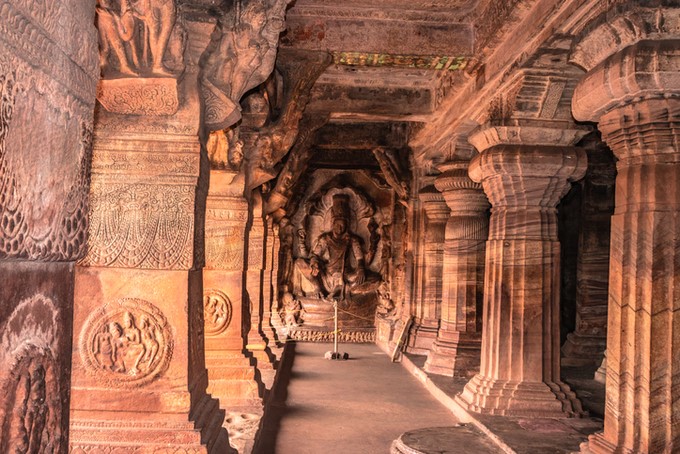
The Badami Cave Temples, located in Bagalkot, Karnataka, India, are a group of ancient rock-cut temples carved out of sandstone cliffs. They are a prominent example of Indian rock-cut architecture and hold great historical and religious significance.
The Badami Cave Temples were constructed during the 6th and 7th centuries under the patronage of the Chalukya dynasty. The temples are dedicated to different deities, including Lord Shiva, Lord Vishnu, and Jain Tirthankaras.
Cave 1 is the largest and most elaborate of the temples, dedicated to Lord Shiva. It features a pillared hall, a sanctum sanctorum, and beautifully carved reliefs depicting scenes from Hindu mythology.
Cave 2 is dedicated to Lord Vishnu and displays carvings depicting the various avatars (incarnations) of Lord Vishnu, including the famous Varaha (boar) avatar.
Cave 3 is a Jain temple dedicated to the Jain Tirthankaras. It features intricately carved pillars, ceilings, and sculptures showcasing Jain religious symbols and figures.
Cave 4 is the smallest and simplest of the caves, believed to be a Buddhist temple or a dwelling place for Buddhist monks. It houses a sculpture of the Bodhisattva (enlightened being).
The rock-cut architecture of the Badami Cave Temples is notable for its intricate detailing, sculptural work, and the seamless integration of the caves with the natural rock formations. The carvings depict mythological stories, gods, goddesses, and various aspects of ancient Indian life.
The Badami Cave Temples are not only architectural marvels but also important religious sites. They attract both devotees and tourists who are captivated by the stunning rock-cut structures and the spiritual aura of the place.
Udupi Sri Krishna Matha
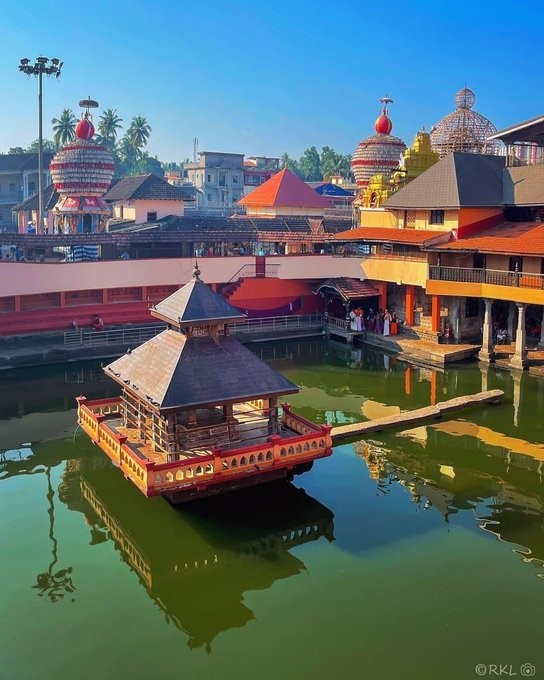
The Udupi Sri Krishna Matha, located in Udupi, Karnataka, India, is a renowned Hindu temple dedicated to Lord Krishna. It is one of the most prominent pilgrimage centers and cultural institutions in the region.
The Sri Krishna Matha was founded by the saint and philosopher Sri Madhvacharya in the 13th century. It serves as the main seat of the Dvaita Vedanta philosophy, propagated by Sri Madhvacharya, and is a significant center of devotion and learning.
The temple complex is known for its unique architectural style, with intricately carved wooden structures and traditional South Indian temple architecture. The main sanctum sanctorum houses the idol of Lord Krishna, also known as Udupi Krishna or Udupi Sri Krishna, which is worshipped with great reverence by devotees.
Hoysaleswara temple, Halebidu
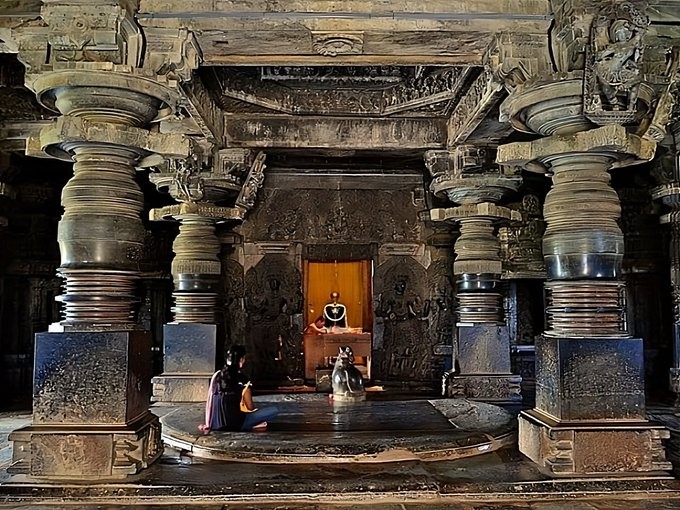
The Hoysaleswara Temple, located in Halebidu, Karnataka, India, is a magnificent Hindu temple dedicated to Lord Shiva. It is one of the most remarkable examples of Hoysala architecture and stands as a testament to the artistic excellence and architectural prowess of the Hoysala Empire.
The Hoysaleswara Temple was built during the 12th century under the patronage of King Vishnuvardhana of the Hoysala dynasty. It took over 80 years to complete and is renowned for its intricate carvings and exquisite craftsmanship.
The temple is dedicated to Lord Hoysaleswara, a form of Lord Shiva. It features two main sanctum sanctorums, each housing a Lingam, representing the divine presence of Lord Shiva. The temple complex also includes other smaller shrines dedicated to various deities.
The exterior walls of the temple are adorned with an abundance of intricately carved sculptures, depicting gods, goddesses, celestial beings, mythological stories, and scenes from everyday life. The level of detailing and the finesse of the carvings are awe-inspiring, showcasing the skill and dedication of the Hoysala artisans.
Murudeshwar Shiva Temple

The Murudeshwar Shiva Temple, located in Murudeshwar, Karnataka, India, is a renowned Hindu temple dedicated to Lord Shiva. It is situated on the picturesque shores of the Arabian Sea and is considered one of the sacred pilgrimage sites in the region.
The temple is known for its iconic towering statue of Lord Shiva, which stands at a height of about 123 feet (37 meters) and is one of the tallest statues of Lord Shiva in the world. The statue is surrounded by an elaborate temple complex that offers breathtaking views of the sea and the surrounding landscape.
Legend has it that Murudeshwar is the place where Lord Shiva appeared to bless the demon king Ravana. The temple is believed to be built on the spot where a piece of the Atma Linga (divine lingam) broke apart and fell after Ravana tried to lift it. As a result, the temple holds immense religious significance for devotees of Lord Shiva.

Leave a Reply